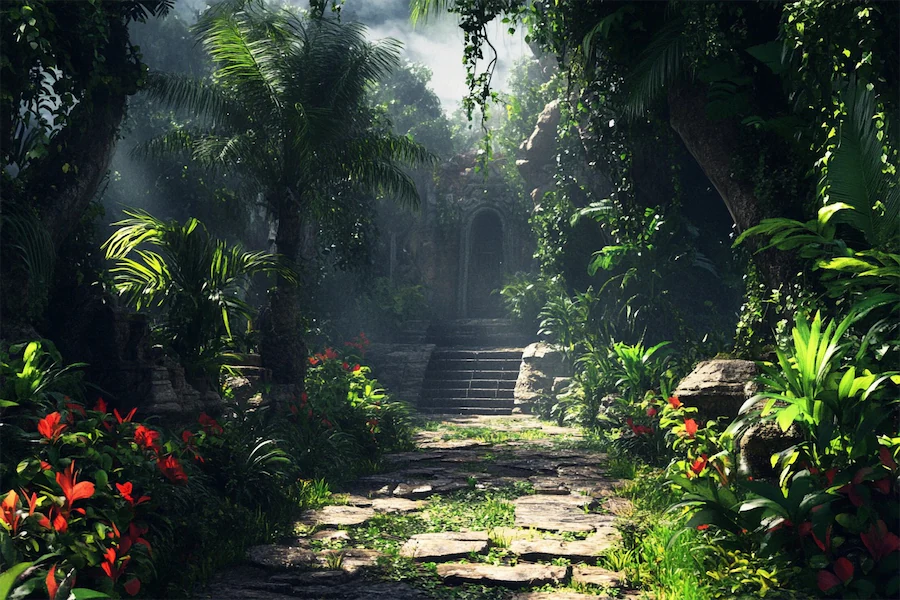A jungle garden is a lush, densely planted outdoor space designed to emulate the rich biodiversity and layered vegetation of a natural jungle. By incorporating a variety of plants with diverse textures, heights, and colors, such gardens create a verdant sanctuary that offers both visual appeal and a habitat for wildlife.
History and Origins of Jungle Gardens
The concept of jungle gardens has been influenced by the Victorian era’s fascination with exotic plants and the desire to recreate tropical landscapes in temperate climates. Plant collectors introduced species from around the world, inspiring gardeners to design spaces reminiscent of dense, tropical jungles. This trend has continued, with modern gardeners seeking to transform their outdoor areas into immersive, naturalistic environments.
Key Features of Jungle Gardens
To create an authentic jungle garden, consider incorporating the following elements:
- Diverse Plant Selection: Choose a mix of plants with varying leaf shapes, sizes, and colors to add depth and interest. Incorporate large-leaved plants like banana plants (Musa basjoo), architectural foliage such as tree ferns (Dicksonia antarctica), and understory plants like hostas and ferns.
- Layered Planting: Mimic the natural stratification of a jungle by arranging plants in layers—from tall canopy trees to mid-level shrubs and ground-covering plants. This approach creates a sense of depth and fullness.
- Water Features: Incorporate elements like ponds, streams, or waterfalls to introduce the soothing sounds of water and support local wildlife. Water features also enhance the humid microclimate favored by many tropical plants.
- Meandering Pathways: Design winding paths that invite exploration and provide different perspectives of the garden, enhancing the sense of adventure and discovery.
Applications of Jungle Garden Design
Jungle gardens offer several benefits:
- Aesthetic Appeal: The lush, layered planting creates a visually captivating environment that stands out from traditional garden designs.
- Wildlife Habitat: Dense vegetation provides shelter and food sources for various species, promoting biodiversity.
- Personal Retreat: The immersive nature of a jungle garden offers a tranquil escape, fostering relaxation and a connection with nature.
Considerations When Creating a Jungle Garden
When planning your jungle garden, keep the following in mind:
- Climate Compatibility: Select plants suited to your local climate. In temperate regions, opt for hardy species that evoke a tropical feel, such as fatsia (Fatsia japonica) and hardy palms like Trachycarpus fortunei.
- Soil Preparation: Ensure the soil is rich in organic matter and well-draining to support the diverse plant life. Amending the soil with compost can improve fertility and structure.
- Maintenance: Regular tasks include pruning to maintain the desired form and prevent overcrowding, mulching to retain moisture, and monitoring for pests and diseases. While jungle gardens aim for a natural look, thoughtful maintenance is essential to keep the ecosystem balanced.
Conclusion
Creating a jungle garden allows you to transform your outdoor space into a verdant oasis that mirrors the beauty and complexity of natural jungles. By thoughtfully selecting a diverse range of plants and incorporating key design elements, you can enjoy a lush, tranquil retreat that supports local wildlife and offers a unique aesthetic appeal.
